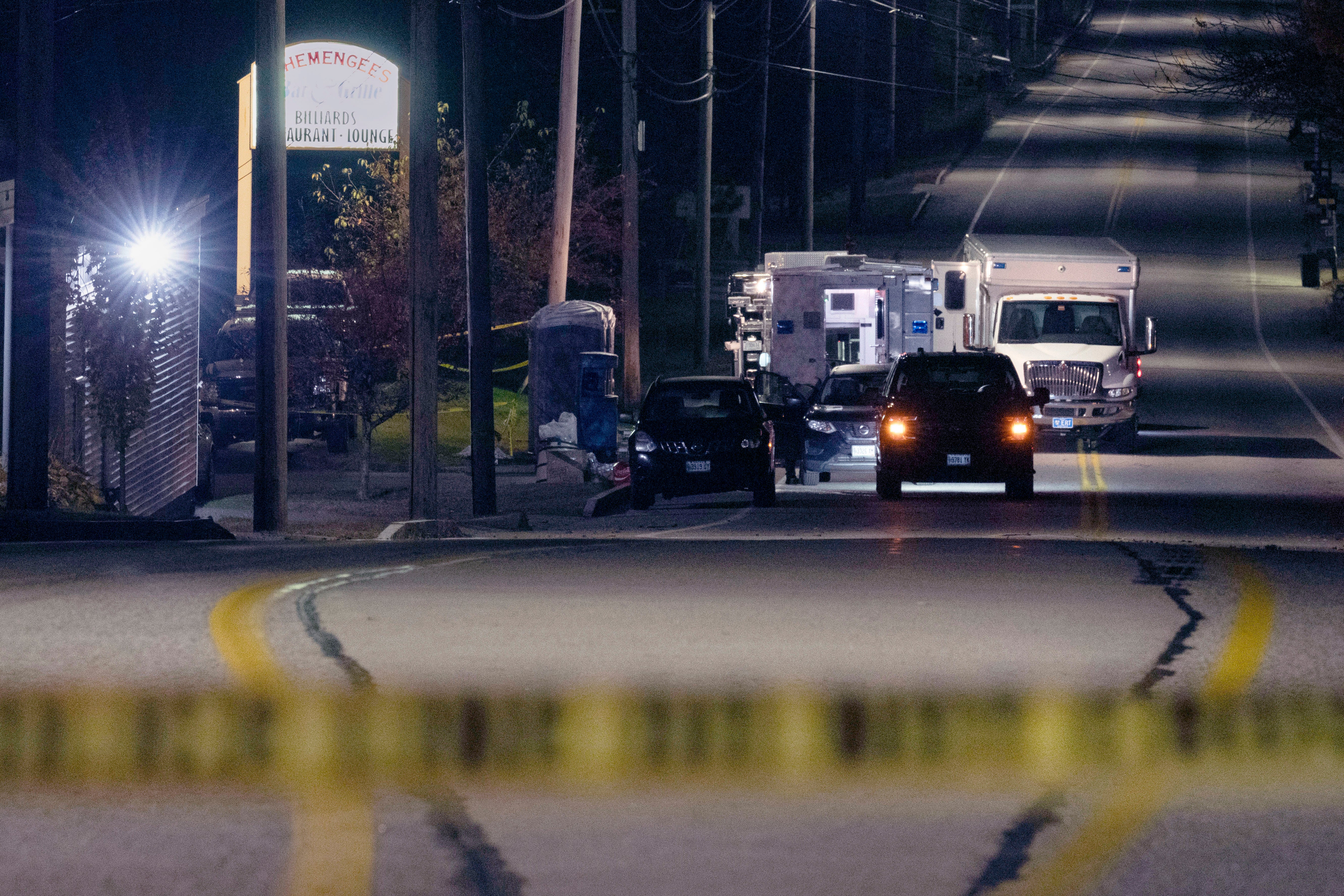911 transcripts reveal chaotic scene as gunman killed 18 people in Maine
The 911 calls flooding into dispatchers as a gunman opened fire at a bowling alley and a bar in Lewiston, Maine, reflect the chaos of the unfolding situation last October

Your support helps us to tell the story
From reproductive rights to climate change to Big Tech, The Independent is on the ground when the story is developing. Whether it's investigating the financials of Elon Musk's pro-Trump PAC or producing our latest documentary, 'The A Word', which shines a light on the American women fighting for reproductive rights, we know how important it is to parse out the facts from the messaging.
At such a critical moment in US history, we need reporters on the ground. Your donation allows us to keep sending journalists to speak to both sides of the story.
The Independent is trusted by Americans across the entire political spectrum. And unlike many other quality news outlets, we choose not to lock Americans out of our reporting and analysis with paywalls. We believe quality journalism should be available to everyone, paid for by those who can afford it.
Your support makes all the difference.Emergency calls pouring into dispatch centers as a gunman opened fire with an assault rifle reflected the chaos of the unfolding situation as shots rang out first at a bowling alley, then minutes later at a bar.
The 911 transcripts of the Oct. 25 shooting, the deadliest in Maine history, were released on Monday. They showed that people began identifying the shooter soon after the photo was released to the public. The transcripts captured tense moments including dispatchers staying on the phone with callers, providing encouragement and telling them to wait for police to announce their arrival.
“Just keep those around you as quiet as possible. If you hear the police announce themselves, make yourselves known, but otherwise I want you to stay down and stay quiet, okay?” one dispatchers said in the transcripts, released in response to a Freedom of Access Act request by The Associated Press and other news organizations.
About two hours after the bowling alley shooting, one caller said they saw a picture of the suspect online and correctly identified him as Robert Card of Bowdoin. The caller described Card’s deteriorating mental health state as known to the community, saying he had recently kicked his family out of his house and “they’re basically estranged and he’s just not been well.”
The caller’s name is redacted, but their statements support previously released police and military statements about Card’s mental health state and potential danger to the community. The caller goes on to state that Card was known to have firearms in his house, and that the sheriff’s department had previously been contacted about his behavior and mental health.
“We’ve just been really concerned about his mental health lately,” the person said.
In another call, the 911 operator became frustrated at one point over not being able to transfer a call with a person who said they are in the back field behind the bar.
“Let me get you over to the call center, OK?” the 911 operator says. Soon after, the operator says “Why won’t it let me transfer it? It won’t let me transfer it at all. Jesus Christ.”
All told, 18 people were killed and 13 wounded when an Army reservist opened fire on Oct. 25, leaving behind carnage and prompting a lockdown for tens of thousands of residents during the biggest manhunt in state history. It ended with the discovery of the body of gunman Robert Card II two days later in nearby Lisbon. An autopsy concluded he died by suicide.
An independent commission appointed by Gov. Janet Mills is investigating all aspects of the shootings, which sparked consternation over why warning signs about Card's deteriorating mental health were ignored.
Concern about Card’s behavior accelerated when he was hospitalized for two weeks while with his Army Reserve unit for training at West Point, New York. After his release, his access to military weapons was restricted, and he was no longer allowed to be deployed with his unit.
His fellow reservists remained worried about him upon his return to Maine. One of them wrote to a superior in September in a text: “I believe he’s going to snap and do a mass shooting.”
The FBI said Card’s hospitalization didn’t cause him to be placed on a list of “prohibited” people who are not allowed to have guns. And laws in New York and Maine aimed at removing guns from people who pose a danger were not invoked.
Deputies visited Card’s home in Bowdoin twice about a month before the mass shootings, but he didn’t come to the door. The sheriff said law enforcement didn’t have the legal authority to knock down the door.
It’s unclear what happened after that, though the sheriff’s office canceled its statewide alert seeking help locating Card a week before the deadly rampage.